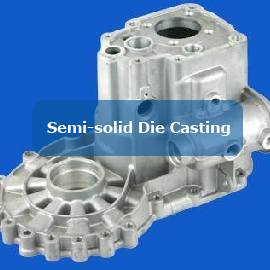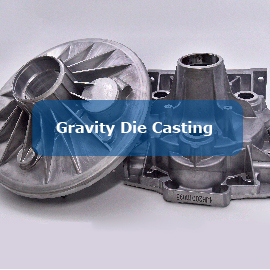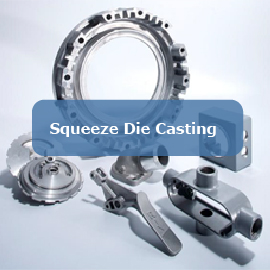What is Aluminum Die Casting?
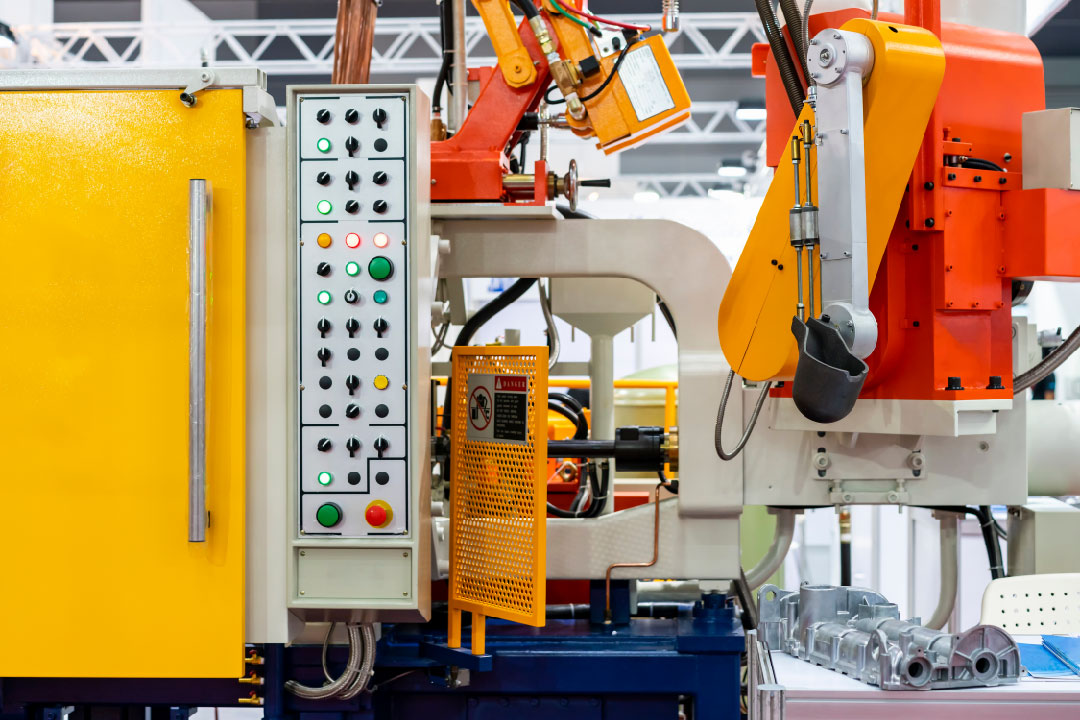
Aluminum die casting is a highly versatile manufacturing process that involves injecting molten aluminum into a mold cavity under high pressure. Once the aluminum cools and solidifies, the mold is opened, and the final product is removed. This process can produce complex, high-quality parts with excellent dimensional accuracy.
Principles of Aluminum Die Casting
Aluminum die casting operates on the principle of using high-pressure injection to force molten aluminum into a reusable steel mold or die. The key principles include:
Mold Design:
The mold is designed to create the desired shape of the final product. It consists of two halves, the fixed half (or cover die) and the ejector half (or ejector die). These halves are precisely machined to form the desired part.
Injection:
Molten aluminum is heated to a specific temperature and injected into the mold cavity under extremely high pressure, typically ranging from 1,000 to 20,000 psi. This pressure ensures that the aluminum fills the mold completely and takes on its shape.
Cooling and Solidification:
After injection, the molten aluminum rapidly cools and solidifies within the mold. Ejection: Once the aluminum has cooled and solidified, the mold is opened, and the part is ejected. The part may undergo further finishing processes like trimming, machining, or surface treatments.
The Aluminum Die Casting Process
The aluminum die casting process involves several steps:
| Step1 | Tooling Design | The creation of the mold, which must be precisely designed to form the desired part. |
| Step2 | Melting and Injection | Aluminum is melted in a furnace and injected into the mold under high pressure. |
| Step3 | Cooling and Solidification | The molten aluminum cools and solidifies within the mold. |
| Step4 | Ejection | The mold is opened, and the finished part is ejected. |
| Step5 | Trimming and Finishing | Excess material (flash) is trimmed, and any necessary secondary operations are performed. |
| Step6 | Quality Control | Parts are inspected for quality and dimensional accuracy. |
Advantages of Aluminum Die Casting
The popularity of aluminum die casting is attributed to its numerous outstanding characteristics. Compared to other non-ferrous metal materials, aluminum die castings offer a wider range of surface treatment options and can withstand higher temperatures. Aluminum die castings are known for their corrosion resistance, high conductivity, excellent rigidity, and an outstanding strength-to-weight ratio, making them highly sought after in various applications. Below are the key advantages and characteristics of aluminum die castings:
| High Precision | The process produces parts with tight tolerances and excellent dimensional stability. |
| Lightweight and durable | Aluminum is a lightweight material, making die-cast components ideal for applications where weight is a critical factor. |
| Corrosion Resistance | Aluminum naturally forms a protective oxide layer, enhancing its resistance to corrosion. |
| Good Thermal and Electrical Conductivity | Aluminum’s high thermal and electrical conductivity make it suitable for heat sinks and electrical components. |
| High Production Rates | Die casting allows for the rapid production of large quantities of parts with consistent quality. |
| Recyclability | Aluminum is recyclable, contributing to waste reduction and resource conservation |
| Good Surface Quality | Aluminum die-castings typically have smooth and consistent surfaces without the need for additional surface treatments |
History of Die Casting
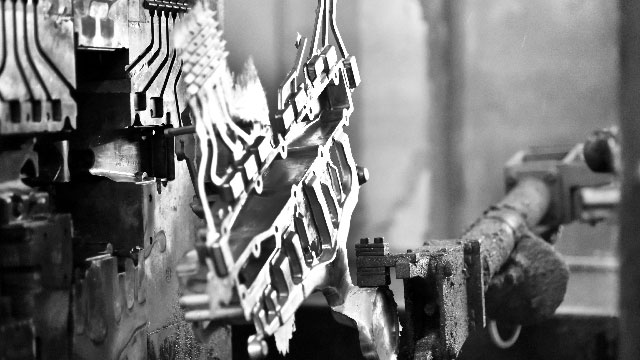 The history of die casting can be traced back to the early 19th century. The earliest die casting equipment was used in the printing industry to manufacture type for printing presses. In 1849, Stettheimer received the first patent for a small manually operated machine designed specifically for casting type. These machines were unique in their ability to produce a variety of shaped die-cast parts with high precision, creativity, and durability.
The history of die casting can be traced back to the early 19th century. The earliest die casting equipment was used in the printing industry to manufacture type for printing presses. In 1849, Stettheimer received the first patent for a small manually operated machine designed specifically for casting type. These machines were unique in their ability to produce a variety of shaped die-cast parts with high precision, creativity, and durability.
In the late 19th century, Otto Mergenthaler developed the Linotype machine, which became a popular and efficient device in the publishing industry. With the growth in production across various industries, commercial die casting production rapidly emerged. Aluminum and zinc gradually replaced the initial use of tin and lead metals due to their higher quality and performance. Modern surface treatments and efficient production factors led to the transition from low-pressure injection casting to high-pressure die casting methods. The die casting industry has become one of the largest sectors in global manufacturing, known for its low-cost production, high consistency, and mass production capability.
Market Segmentation and Market Situation
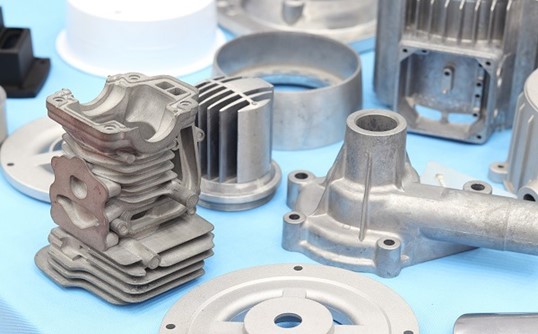 The aluminum die casting market continues to grow, with the Asia-Pacific region, in particular, capturing the majority of the share. With the rise of emerging economies like China, the market is expected to continue expanding in the coming years. According to Transparency Market Research, the Asia-Pacific market share is projected to reach $22.67 billion by 2025, with a compound annual growth rate of 5.3%. Europe and North America are also expected to maintain robust growth, reaching $9.45 billion and $4.22 billion, respectively, by 2025.The outlook for aluminum die casting is vast, covering multiple industries. Here are some major market segments and the current market situation:
The aluminum die casting market continues to grow, with the Asia-Pacific region, in particular, capturing the majority of the share. With the rise of emerging economies like China, the market is expected to continue expanding in the coming years. According to Transparency Market Research, the Asia-Pacific market share is projected to reach $22.67 billion by 2025, with a compound annual growth rate of 5.3%. Europe and North America are also expected to maintain robust growth, reaching $9.45 billion and $4.22 billion, respectively, by 2025.The outlook for aluminum die casting is vast, covering multiple industries. Here are some major market segments and the current market situation:
Automotive Industry:
Automotive manufacturers extensively use aluminum die-cast components to reduce vehicle weight, improve fuel efficiency, and reduce emissions.
Electronics Industry:
Electronic devices require lightweight, heat-dissipating components, making aluminum die casting an ideal solution.
Aerospace Industry:
Aerospace components demand highly precise and high-performance manufacturing, and aluminum die casting meets these requirements.
Construction and Architecture:
Aluminum die casting is used to manufacture windows, doors, curtain wall systems, and other architectural materials, providing durability and aesthetics.
Energy Sector:
Aluminum die-cast components are used in energy production and distribution, such as wind power generation and solar systems.
Consumer Electronics: Aluminum die-cast components in products like smartphones and tablets offer lightweight and durability.
Future Trends and Developments
In the future, the aluminum die casting industry will benefit from new technologies and growing market demand. Here are some future trends:
Application of New Materials: Improvements in aluminum alloys and the application of new materials will enhance the performance of aluminum die-cast parts for a wider range of applications.
Digital Manufacturing: Digital manufacturing technologies will further optimize production processes, increasing efficiency and quality control.
Sustainable Manufacturing: The industry will place a greater emphasis on sustainability, including material recycling and improved energy efficiency.
Automation and Robotics: Automation and robotics will play a more significant role in the die casting process, improving production efficiency.
Customization: The aluminum die casting industry will be better equipped to meet customer demands for customization, including small-batch production and custom designs.
Alternative Processes to Die Casting
While aluminum die casting has numerous advantages, there are alternative processes, including sand casting and investment casting.
Sand Casting: Sand casting is one of the oldest and most widely used casting methods. It is suitable for producing small batches of components. The preparation process is relatively simple, but additional machining is often required to improve surface quality compared to aluminum die casting.
Investment Casting: Investment casting, also known as precision casting or lost-wax casting, uses wax patterns to create parts. It is suitable for applications that require highly complex and precise components. However, it is generally more expensive compared to aluminum die casting.
Conclusion
Aluminum die casting stands as a versatile and highly efficient method for producing a wide range of intricate and precise metal components. Its advantages in terms of lightweight, durability, and cost-effectiveness have made it indispensable in industries such as automotive, aerospace, electronics, and more. As the demand for sustainable manufacturing practices grows, aluminum die casting is poised to play a pivotal role due to its recyclability and energy efficiency.
As we look to the future, the aluminum die casting industry is expected to continue evolving. Advances in materials, automation, and sustainability practices will shape the industry’s landscape. To explore how aluminum die casting can benefit your specific needs or to request a quote, please contact us. Our team of experts is ready to assist you in achieving your precision metal component goals.


